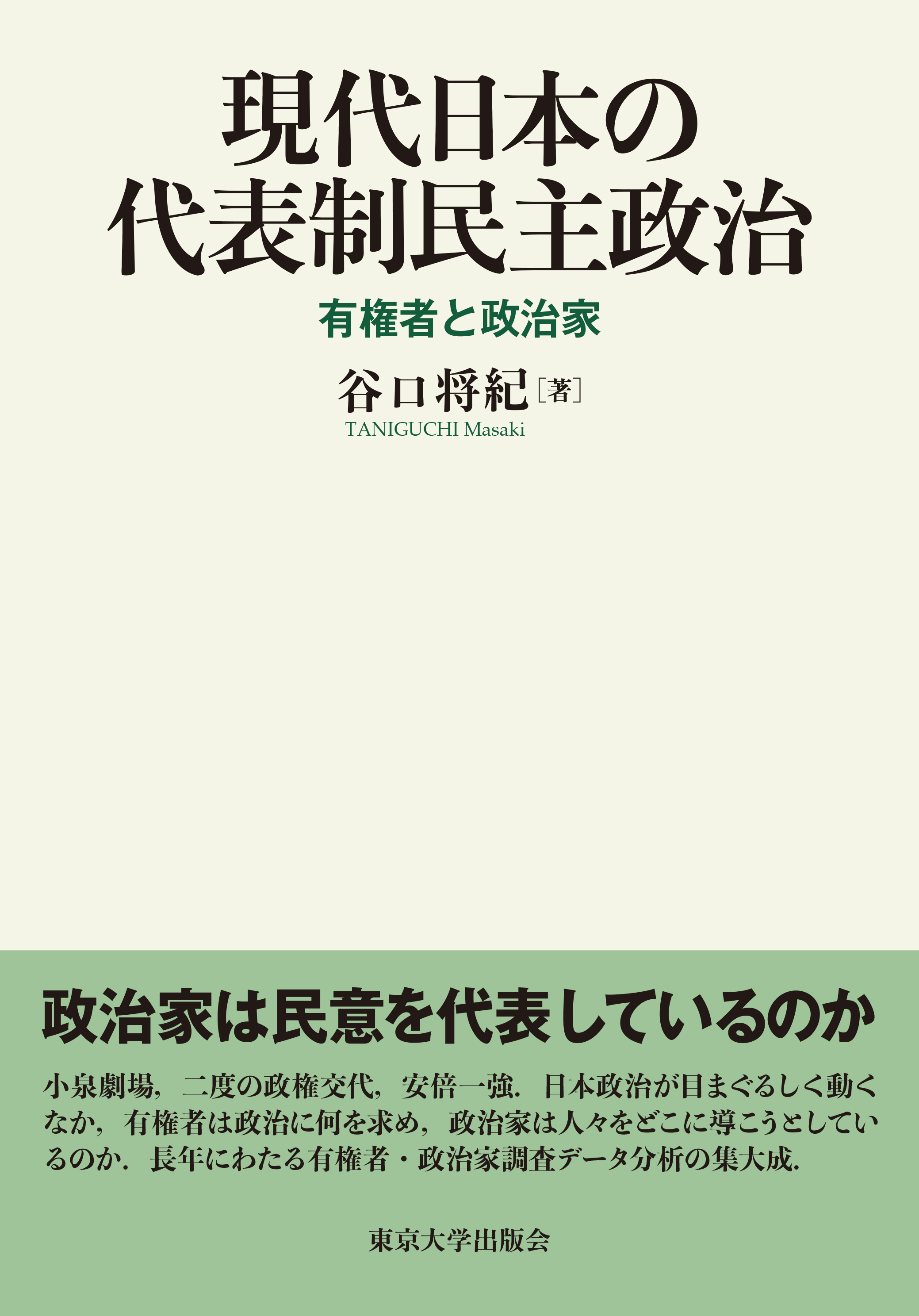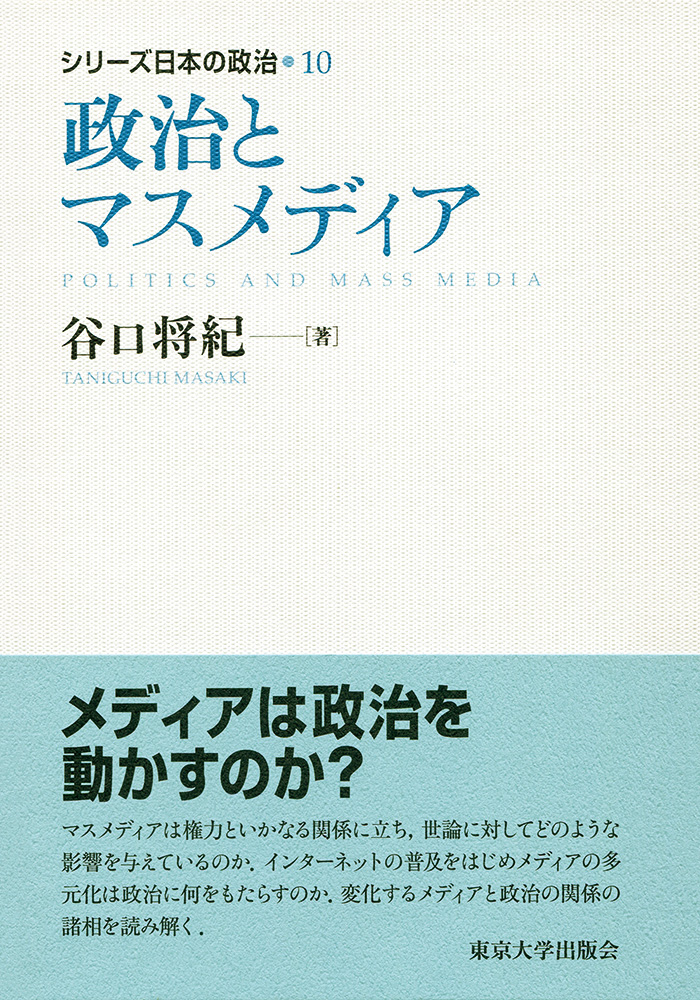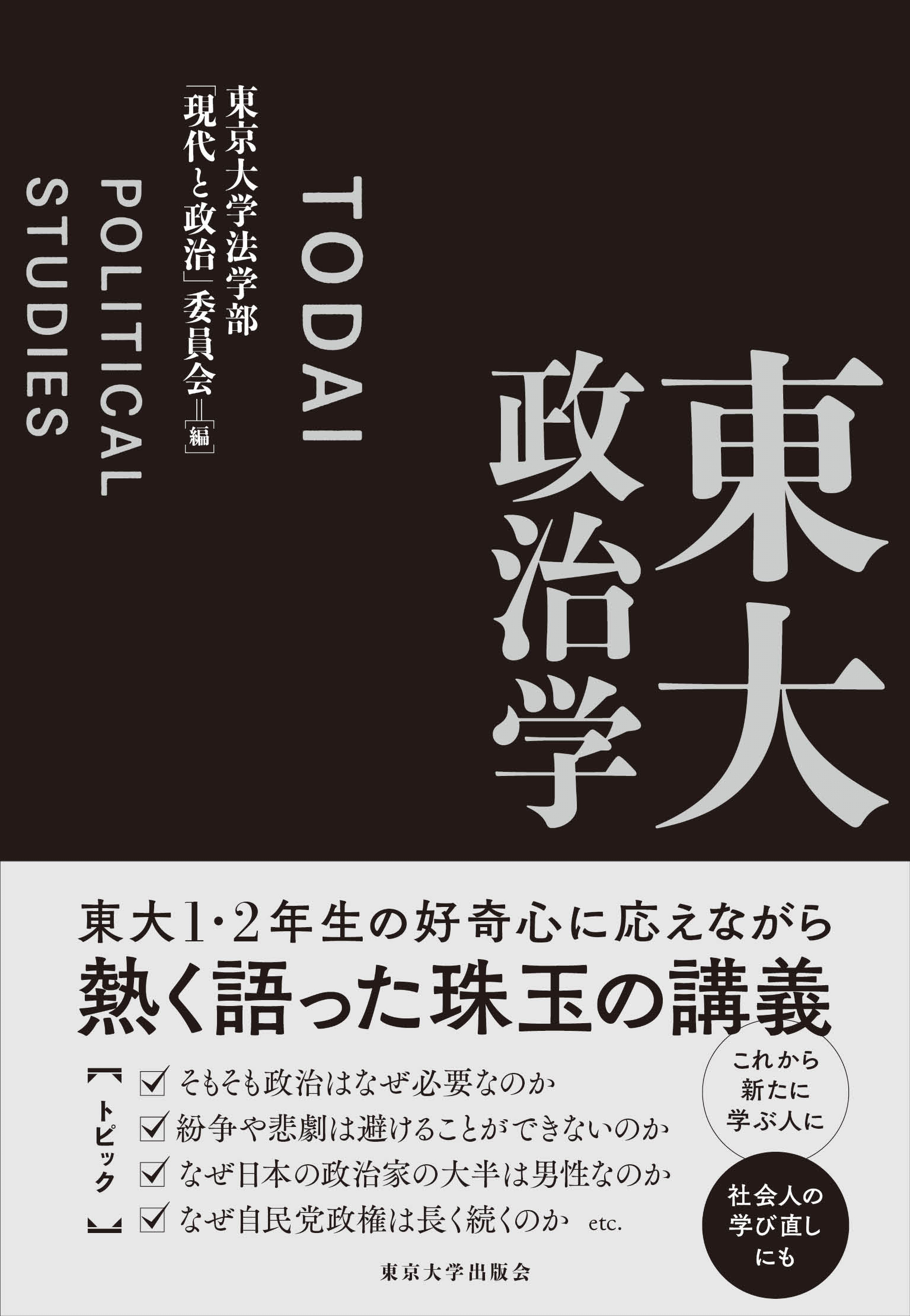
Title
Gendai-Nihon no Daihyo-sei Minshu-Seiji (Representative Democracy in Japan: Voters and Politicians)
Size
336 pages, A5 format
Language
Japanese
Released
March 13, 2020
ISBN
978-4-13-030171-8
Published by
University of Tokyo Press
Book Info
See Book Availability at Library
Japanese Page
It is not uncommon to place political parties and politicians on the left-right political spectrum. The general understanding of Japanese major political parties is that the Liberal Democratic Party (LDP) is on the right, the Constitutional Democratic Party of Japan is slightly to the left of the center, the Communist Party is on the left, and so on.
However, this understanding is based only on a relative scale of, say, Party A to the left (or right) of Party B and is not measured by a yardstick. It is therefore difficult to objectively answer the question of which stands closer to the left (or right) edge of the spectrum, voters’ or politicians’ policies, and the question of how the policies of Party A have changed over the last decade.
This book provides objective evidence to these essential questions for democratic politics. Data from surveys of both voters and politicians carried out jointly at every national election since 2003 by the Taniguchi Laboratory of the University of Tokyo and Asahi Shimbun were used to make cross-sectional comparisons of voters’ and politicians’ policies on a spectrum and to track changes over time of all these subjects. A survey of politicians is an orthodox method used globally. While low response rates had been a critical issue with this method in the past, the UTokyo-Asahi Survey has successfully obtained responses from over 90% of the candidates, which is quite rare in the world as well as being valuable, for it allows for direct comparison with the survey results of the voters.
An analysis of the left-right ideological position based, for example, on the survey data from the 2017 general election, with regard to participants’ attitudes on contentious policies revealed that the ideological distribution of Diet members elected by voters was to the right of the voters, and Shinzo Abe, who was appointed as the Prime Minister by those Diet members and was one of the respondents of this survey, was positioned further to the right of the majority of the Diet members (and even among the LDP members). Our continuous and longitudinal survey enabled us to compare trends over time, indicating that the LDP has shifted to the right since the 2005 general election and, after its return to power in 2012, has remained further to the right than it was before losing power.
Since political parties and politicians play the role of persuading and guiding people, in addition to reflecting their voices on policies, the distance in terms of policy between voters and politicians is not straightforwardly negative. However, the separation between politics and voters can be normatively justified only insofar as it does not give a permanent blank check to a political party or politicians and only insofar as people are able to reach positions indicated by the politicians within a reasonable time frame in the future. To accomplish this, political parties and politicians are expected to thicken and broaden their communication channels with the voters.
(Written by TANIGUCHI Masaki, Professor, Graduate Schools for Law and Politics / 2020)



 Find a book
Find a book






